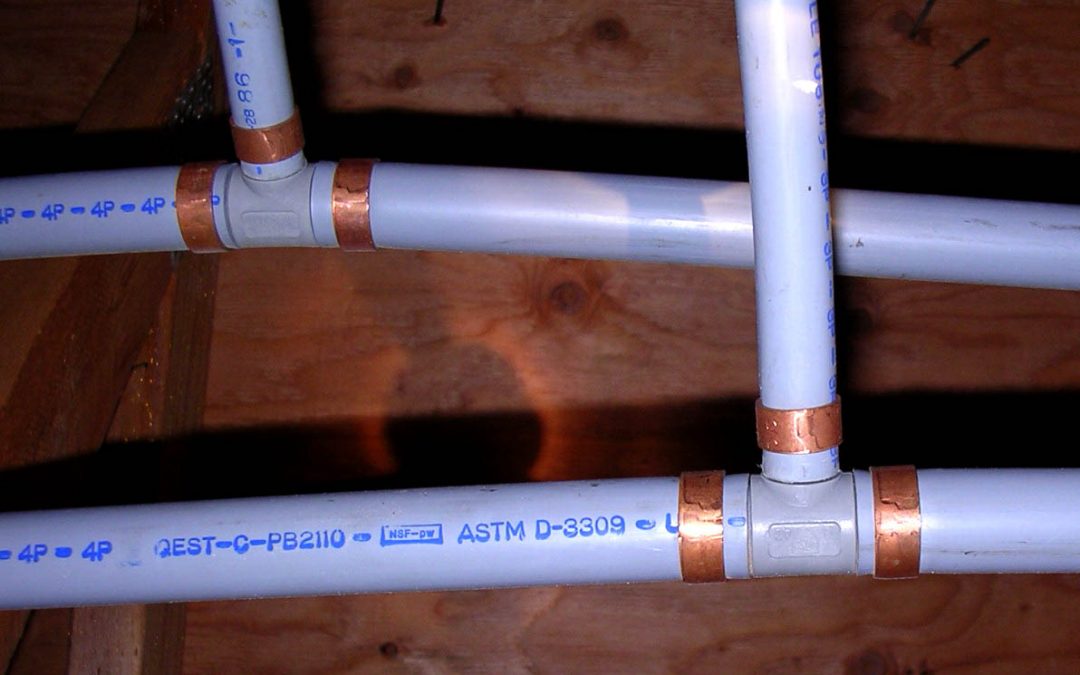Polybutylene (PB) was a plastic manufactured between 1978 and mid-1995 for use as piping in home plumbing systems. It was inexpensive and offered plenty of advantages over other materials, such as flexibility, ease of installation, resistance to freezing. Pipes made from polybutylene were installed in up to 10 million homes and apartments in the Unites States during that period. Despite its strengths, production was ceased in mid-1996 after scores of allegations surfaced claiming that polybutylene pipes were rupturing and causing property damage. In the homes an apartments that still contain this material, property owners must either pay to have the pipes replaced or risk a potentially expensive plumbing failure.

- usually stamped with the code “PB2110”;

- flexible and sometimes curved, unlike rigid piping materials such as copper;
- not used for waste, drain or vent piping;
- most commonly grey in color, but they can also be white, silver, black or blue. Blue PB is used primarily outdoors and should only be used to carry cold water. Inspectors should be aware that black or white pipes might not be polybutylene (they might be polyethylene or PVC, respectively). Also, PB color is somewhat region-dependant. For instance, experienced home inspectors in California might never come across grey PB, while it is quite common elsewhere;
- ½” to 1” in diameter.
Polybutylene pipes can be in an apartments interior or exterior in any of the following locations:
- protruding from walls to feed sinks and toilets;
- running across the ceiling in unfinished basements;
- near the water heater.
Exterior:
- entering the building through the basement wall;
- at the water meter;
- at the main water shut-off valve.
- We have found copper supply coming from the wall making it appear the property was plumbed with copper, when in reality it was predominantly PB. A common example of this union is where PB pipe links with copper “stub outs” that feed bathroom fixtures.

- PEX (pictured at right): Common in radiant-heating systems, this cross-linked polyethylene can be black, blue or red. It is more easily coiled and more flexible than PB. It can withstand higher temperatures than polyethylene.
- PVC: A popular building material commonly used in residential plumbing. CPVC is derived from PVC and is also used in plumbing. Both appear white or off-white and can be flexible or rigid.
- Polyethylene: This material is flexible and black.
- Copper: Copper is a metal that should never be confused with PB.


